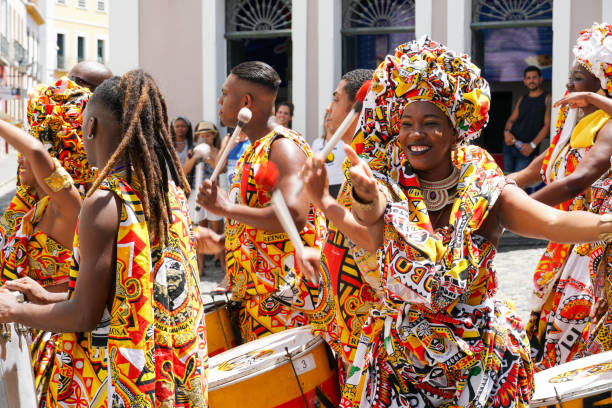Introduction
Culture is an integral part of a society’s identity. From colorful festivals and ceremonies to unique cuisine and clothing styles, every culture has its own set of traditions that make it stand out from the rest. These traditions are passed down from generation to generation, preserving the rich heritage of each society. In this article, we’ll explore 10 cultural traditions from around the world that you need to know.
Holi – India
Holi is a Hindu festival of colors celebrated in India and Nepal. It marks the arrival of spring and the triumph of good over evil. During Holi, people take to the streets to dance, sing, and throw colored powder at each other. It’s a celebration of unity and joy, and a perfect example of India’s rich cultural heritage.
La Tomatina – Spain
La Tomatina is a food fight festival held annually in the Spanish town of Buñol. Participants throw ripe tomatoes at each other in a playful and joyful manner, making it one of the most unique and fun cultural traditions in the world.
Oktoberfest – Germany
Oktoberfest is a 16-day festival held in Munich, Germany, celebrating the country’s rich beer culture. It’s a time for people to come together, enjoy good food and drink, and participate in traditional activities such as carnival rides and games.
Day of the Dead – Mexico
The Day of the Dead is a Mexican holiday celebrated on November 1st and 2nd. It’s a time to remember and honor loved ones who have passed away. During the celebration, families create ofrendas, or altars, decorated with flowers, food, and other offerings.
Chinese New Year
Chinese New Year is a 15-day celebration marking the start of the lunar new year. It’s a time for families to come together, enjoy good food, and participate in traditional activities such as dragon and lion dances. The holiday is steeped in symbolism and tradition, making it one of the most important cultural celebrations in China.
Harira Soup – Morocco
Harira soup is a traditional soup served during Ramadan in Morocco. It’s a time for families to come together and break their fast with a nutritious meal. Harira soup is made from a variety of ingredients, including lentils, chickpeas, and spices, and is an important part of Morocco’s rich culinary heritage.
Eid al-Fitr – Muslim World
Eid al-Fitr is a Muslim holiday marking the end of Ramadan, the month of fasting. It’s a time for families to come together and celebrate with good food, gifts, and traditional activities such as mosque visits and special prayers.
Hanami – Japan
Hanami is a traditional Japanese custom of admiring the beauty of cherry blossom flowers. During Hanami, families and friends come together to enjoy picnics, food, and drinks under the blooming trees. It’s a celebration of the arrival of spring and a perfect example of Japan’s rich cultural heritage.
Lunar New Year – Vietnam
The Lunar New Year is a 15-day celebration marking the start of the lunar new year in Vietnam. It’s a time for families to come together, enjoy good food, and participate in traditional activities such as dragon and lion dances. The holiday is steeped in symbolism and tradition, making it one of the most important cultural celebrations in Vietnam.
Mardi Gras – New Orleans, USA
Mardi Gras is a Carnival celebration held in New Orleans, Louisiana, USA. It’s a time for people to come together and celebrate with colorful parades, masked balls, and good food. Mardi Gras is famous for its lively atmosphere and unique traditions, making it one of the most popular cultural celebrations in the world.
Conclusion
Cultural traditions play a significant role in shaping a society’s identity and preserving its heritage. From Holi in India to Mardi Gras in New Orleans, every culture has its own unique set of traditions that make it stand out from the rest. By exploring these 10 cultural traditions from around the world, we can gain a deeper appreciation for the richness and diversity of our world’s cultural heritage.












